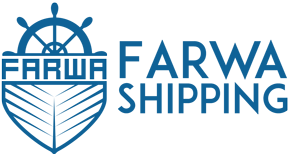
In summary, the choice of depreciation method depends on the nature of the asset and the company’s accounting and financial objectives. The depreciation expense recorded under the double declining method is calculated by multiplying the accelerated rate, 36.0% by the beginning PP&E balance in each period. For reporting purposes, accelerated depreciation results in the recognition of a greater depreciation expense in the initial years, which directly causes early-period profit margins to decline. The formula used to calculate annual depreciation expense under the double declining method is as follows. Before calculating depreciation using the Double Declining Balance method, identify three core components. The original cost is the total purchase price of the asset, including additional costs to get it ready for use, such as shipping or installation.
Declining Balance Depreciation Calculator
- Sum-of-the-years’ digits is another accelerated method, but it is less aggressive than DDB, making it more suitable for moderately depreciating assets.
- It’s important to accurately estimate the useful life to ensure proper financial reporting.
- After determining the rate, it is applied annually to the asset’s book value, which is the original cost minus accumulated depreciation.
- We just looked at the double declining balance depreciation method, the others shouldn’t take too long to master.
- The theory is that certain assets experience most of their usage, and lose most of their value, shortly after being acquired rather than evenly over a longer period of time.
- If you’re brand new to the concept, open another tab and check out our complete guide to depreciation.
Calculate it by dividing the total cost minus salvage value by the estimated total units the asset will produce or hours it will operate over its life. Multiply this rate by the actual units produced or hours operated each year to get your depreciation expense. Here, you divide the cost of the asset minus its salvage value by the number of years it’s expected to be useful. For example, if you buy a piece of equipment for $10,000 and expect it to last 10 years with no salvage value, you’ll charge $1,000 to depreciation each year. The double declining balance depreciation method is one way to account for the useful life of assets and we are going to explain and demonstrate how it works.
Transition to Straight-Line Depreciation
A company may elect to use one depreciation method over another in order to gain tax or cash flow advantages. Each year, as your assets get older and less efficient, their value decreases. Depreciation lets you record this decrease in value on your financial statements.
- In later years, as maintenance becomes more regular, you’ll be writing off less of the value of the asset—while writing off more in the form of maintenance.
- DDB is best used for assets that lose value quickly and generate more revenue in their early years, such as vehicles, computers, and technology equipment.
- Take your business to the next level with seamless global payments, local IBAN accounts, FX services, and more.
- We empower accounting teams to work more efficiently, accurately, and collaboratively, enabling them to add greater value to their organizations’ accounting processes.
- Based on the above steps, companies can also make the process straightforward.
- For instance, if you buy a truck for deliveries, depreciating it over its useful life lets you correlate the truck’s declining value with the income it’s helping to bring in each year.
Order to Cash Solution

Note how the book value of the machine at the end of year 5 is the same as the salvage value. Over the useful life of an asset, the value of an asset should depreciate to its salvage value. This pattern continues until the book value approaches the salvage value, ensuring depreciation never exceeds the asset’s worth. Boost your confidence and master accounting skills effortlessly with CFI’s expert-led courses! Choose CFI for unparalleled industry expertise and hands-on learning that prepares you for real-world success.
- This is unlike the straight-line depreciation method, which spreads the cost evenly over the life of an asset.
- Consider a machine that costs $25,000, with an estimated total unit production of 100 million and a $0 salvage value.
- The depreciation expense is then recorded in the accumulated depreciation account, which reduces the asset book value.
- If an asset does not meet the above definition, companies cannot charge depreciation for it.
- Under straight line depreciation, XYZ Company would recognize $3,000 in depreciation expense each year.
- The book value of $64,000 multiplied by 20% is $12,800 of depreciation expense for Year 3.
- In year two, the basis would be adjusted to $3,000, and the depreciation expense would be $1,200 (40 percent of $3,000).
In year one, the depreciation expense is twice that of the straight-line method, or 2/5 (40%) of $10,000, which equals $4,000. That’s a hefty depreciation expense, but that’s what Double-Declining depreciation is all about. This formula is called double-declining balance because the percentage used is double that of Straight-line. Chartered accountant Michael Brown is the founder and CEO of Double Entry Bookkeeping. He has worked as an https://www.adost.co.kr/archives/37832 accountant and consultant for more than 25 years and has built financial models for all types of industries.
- There is also Section 179 expense deduction for writing off an asset in the first year which may, or may not, apply.
- Continue this until the asset’s book value approaches its salvage value or until the asset is fully depreciated.
- This method is especially useful for assets that quickly lose their value or become obsolete, such as technology or machinery.
- In the complex world of accounting, understanding how to manage asset values over time is crucial.
- It recognizes a larger portion of an asset’s cost as depreciation expense in its earlier years, contrasting with methods that distribute cost evenly.
- The declining balance depreciation method is used to calculate the annual depreciation expense of a fixed asset.
Calculating the Double Declining Balance Rate

Preference for Early Tax BreaksFrom a business strategy standpoint, DDB can provide significant tax advantages during the early years of an asset’s life due to higher depreciation expenses. Companies preferring early reductions in taxable income may find utilizing the DDB method beneficial. No actual cash is put aside, the accumulated depreciation account simply reflects that funds will be needed in the future to replace the fixed assets which are reducing in value due to wear and tear. Calculating depreciation with the declining balance method begins with determining the appropriate depreciation rate. This rate, a multiple of the straight-line rate, is calculated by dividing 100% by the asset’s useful life.
Keeping track of asset value

This guide offers a complete, step-by-step approach to accelerated asset cost allocation. In year 5, companies often switch to straight-line depreciation and debit Depreciation Expense and credit Accumulated Depreciation for $6,827 ($40,960/6 years) in each of the six remaining years. An asset for a business cost $1,750,000, will have a life of 10 years and the salvage value at the end of 10 years will be $10,000. You calculate 200% of the straight-line depreciation, or a factor of 2, and multiply that value by the book value at the beginning of the period to find the depreciation expense for that period.

Knowing when it fits the double declining balance method best can maximize financial accuracy and strategic benefits while avoiding potential drawbacks. It’s important to note that this method never depreciates an asset below its salvage (residual) value. In this article, we’ll explore how the DDB method works, when to use it, how to calculate it step-by-step, and how tools like Wafeq can help automate the entire process.
The “double” means 200% of the straight line rate of depreciation, while the “declining balance” refers to the asset’s book value or carrying value at the beginning of the accounting period. Double declining balance depreciation allows for higher depreciation expenses in early years and lower expenses as an asset nears the end of its life. An organization can choose different methods of depreciation for financial reporting purposes and for tax purposes. The IRS specifies the depreciation method and rate virtual accountant that must be used for tax purposes in a system called the modified accelerated cost recovery system (MACRS).
Use of our products and services is governed by our Terms of Use and Privacy Policy. Download CFI’s free Excel template now to advance your finance knowledge and perform better financial analysis. Therefore, Company A would depreciate the machine at the amount of $16,000 annually for 5 years. OneMoneyWay is your passport to seamless global payments, secure transfers, and limitless opportunities for your businesses success.
